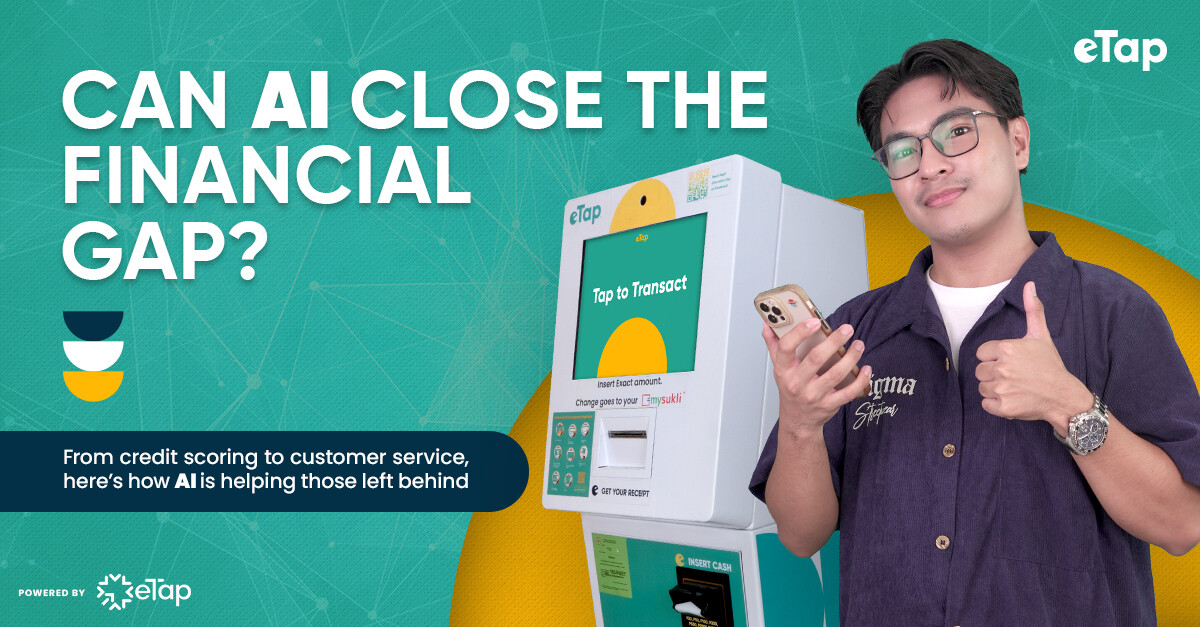Customers
Can AI close the financial gap?

Finance is evolving, and it would be a colossal understatement to say that artificial intelligence (AI) is a part of that.
Between fintech startups and legacy banks, AI is already fundamentally changing the finance sector in different ways. But perhaps most exciting of all is AI’s potential to open up financial services and products to traditionally underserved sectors, including the millions of still unbanked around the world.
Yet while AI’s massive potential is widely recognized, what financial companies are trying to figure out is how specifically AI can be used to serve their target markets. For example, is it just about using generative AI to expedite the creation of marketing material? Or is it about using AI chatbots to augment human-led call centers?
Deciding how to use AI can be overwhelming. But for companies focused primarily on financial inclusion, the article below goes over how AI is making a difference in fraud detection, credit scoring, and personalization at scale.
Say hello to better fraud detection
One of AI’s biggest strengths is its capacity for pattern recognition at scale.
AI can be trained on large reams of customer data to predict future behavior better, and then catch and block any fraudulent transactions. This is possible through machine learning, which is a subfield of AI focusing on developing algorithms and models enabling computers to learn from data, identify patterns from within the data, and make decisions accordingly.
Machine learning helps AI predict what sort of transactions a customer is likely to perform—and then prevent any transactions that don’t fall in line with these predictions. It can also flag any massive deviations from a customer’s normal behavior, such as a large overseas transaction.
Credit scoring just got a lot easier
Access to credit used to be reserved only for those with an already extensive banking/credit history. The problem with this system is that it leaves out the millions of unbanked around the world, immediately deeming them as too much of a risk for any credit line.
AI solves this problem by harnessing advanced machine learning to analyze data points beyond what traditional banks check. This includes bills payments history, social media activity, and even mobile phone usage patterns to create a more accurate picture of one’s creditworthiness.
Because AI is also much more agile, it’s also more sensitive to real-time indicators of creditworthiness such as employment status, monthly income, potential other employment opportunities, and even projected ability to earn.
Personalization at scale
Financial services has traditionally adopted a one-size-fits-all approach that leaves out the needs of the underserved.
The good news is that through algorithmic data analysis, financial services can cater to a diverse range of businesses and individuals in a wide array of contexts. For example, AI is already being used to give specific investment advice based on a user’s specific income level and risk appetite—all while taking into account the most recent market data.
In the real world, Singapores’ DBS Bank already sends about 30 million AI-powered personalized nudges every month to 3.5 million customers. These nudges help guide spending, savings, and investment decisions according to each specific customer's financial habits and goals.
In conclusion, the answer is a resounding YES: AI can help close the financial gap. By enabling smarter credit decisions, expanding access to financial services, and delivering personalized guidance at scale, AI empowers more people to participate in the formal economy.
Considering how much AI can do, it stands to reason that forward-looking fintech companies such as eTap Solutions powered by eTap Inc. are increasingly looking for ways to integrate AI. For example, eTap recently partnered with AI solutions provider Proto to create unified and automated customer interactions across both kiosk and digital channels. Together, eTap leverages AI for better transaction support, account inquiries, and troubleshooting in Filipino languages and accessible formats.
Interested in placing an eTap kiosk right in your store? Reach out to the official eTap Solutions LinkedIn page or message Joe at joe@etapinc.com!
Article by Pancho Dizon
Graphic by Javi Acosta

